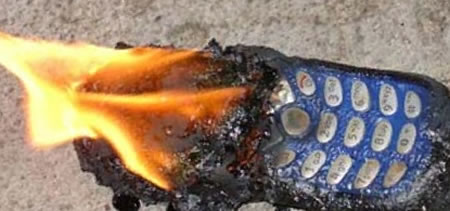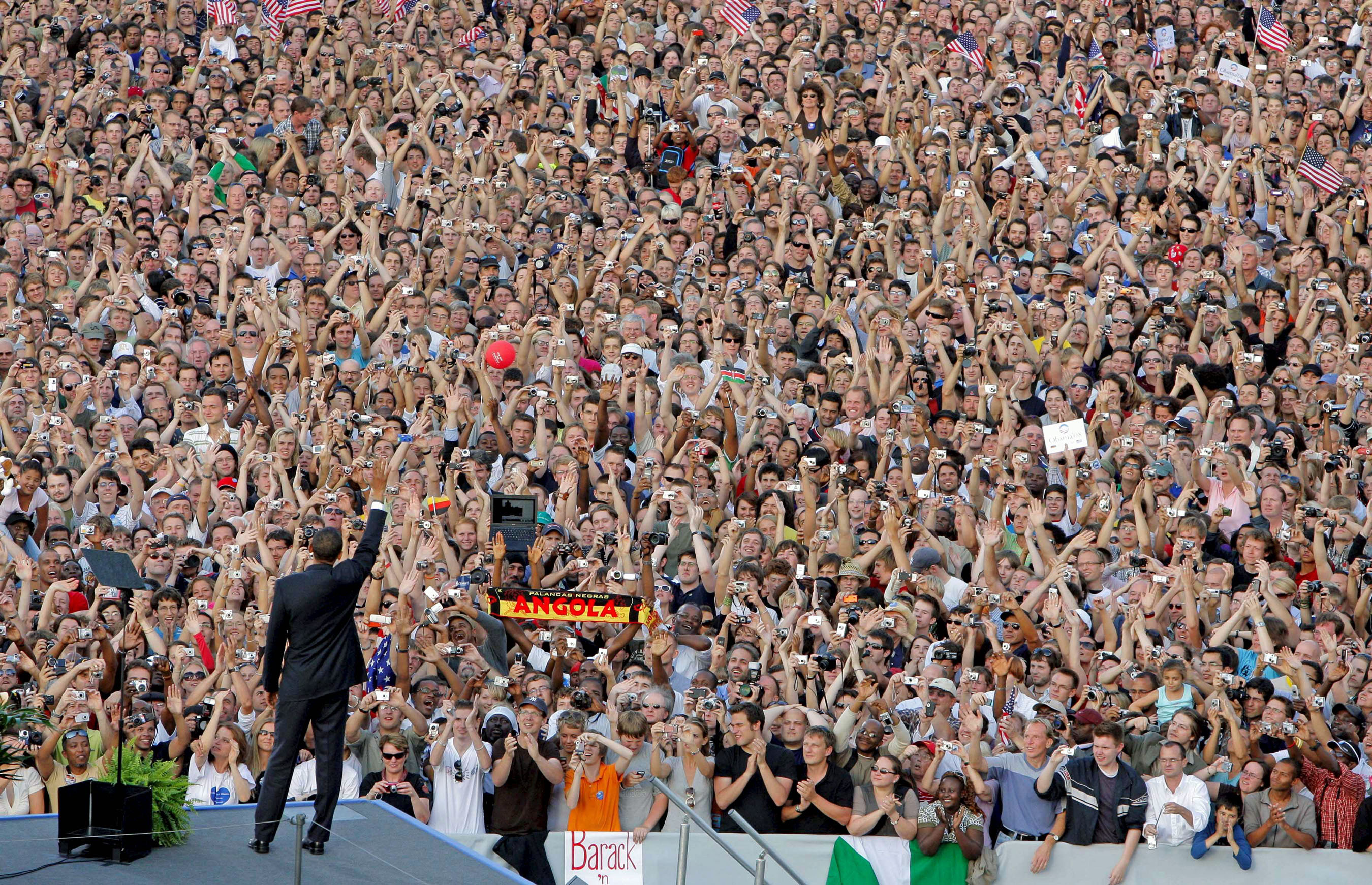There’s a lot of noise in political channels.
Unfortunately, very little of it will help you win a campaign, reach out to constituents or support your advocacy efforts. That’s why we created PoliMinute, a once-a-week update on mobile and politics with articles from our blog and other sourced content.
We’ve added you to our list because of our prior contact. If you prefer not to get this email, our apologies. Simply unsubscribe instantly using the link in the footer below.
-Curt
Here’s some of what you missed last month:
#1 Don’t Burn Your Mobile List!
Many supporters subscribe to e-mail lists for insights on campaign activities, wins and other information. What they don’t expect is the tsunami of donation asks – which effectively ‘burn’ email lists. It’s often the primary reason why e-mail open rates so low compared to other industries. Campaigns who think they can do the same with their SMS lists are sorely mistaken:
http://goo.gl/1CnRR
#2 Text2Give? It’s More like Text2Lose.
Text2Give campaigns, the tool used successfully by nonprofits, was heralded as the great fundraising equalizer against Super PACS. Supporters could donate to a campaign on impulse, $10 at a time, without filling out any forms. Though the FEC approved its use in early June, there’s still a lot of excitement. Unfortunately, the numbers aren’t just there yet from our own analysis. C&E has their own take on this fundraising method:
http://goo.gl/FgLBv

Get 3FER Every Week
Just scan this QR code or text VOTES to 75309 to sign up for our weekly SMS update on mobile and politics.
#3 Looking for Mobile Examples? Look no further than the GOP.
While Obama use mobile tools with great effect in 2008, Democrats largely ignored them in 2010. There are more than a few examples of how GOP candidates and incumbents leveraged mobile to connect with voters and supporters. This article is a little dusty, but the work that Rep. Devin Nunes (campaign ad: http://goo.gl/VClAC) should generate some ideas. Mobile Marketer covered the Congressman’s efforts last fall:
http://goo.gl/U8MSm
Want to incorporate mobile tools in your campaign?
We’d be happy to sit down and brainstorm ideas with you. Contact us at 651-222-9201 or via email at info@polimobile.com.
 Since mobile web accounts for 20% of all Internet traffic and 26% of Americans use their mobile phone to participate in the 2010 midterm elections, we thought it would be time to see how well Minnesota federal campaigns and political parties are using mobile web.
Since mobile web accounts for 20% of all Internet traffic and 26% of Americans use their mobile phone to participate in the 2010 midterm elections, we thought it would be time to see how well Minnesota federal campaigns and political parties are using mobile web.
The verdict: not very well.
(We, on the other hand, got a perfect score of 6 out of 6.)
We used Google’s handy GoMoMeter to score the sites and see how fast their homepages download. Here’s some quick insights:
- The presidential and senate campaigns all had mobile sites that were quite speedy, though Kurt Bills’ took over 8 seconds to download.
- The Minnesota GOP is worlds ahead of the DFL Party – kudos to them. While the DFL recently updated their site they largely ignored mobile.
- While her mobile website leaves a lot to be desired, Betty McCollum’s campaign got a perfect six out of six from the GoMoMeter.
- While normally an innovative campaigner, Michele Bachmann’s campaign to nearly over nine seconds to download her desktop site.
- Keith Ellison’s campaign has the most benefit from mobile with a MACE of 108.5% within his district. Unfortunately, his desktop site was the second slowest to download.
Here are the complete results:

Many people make the mistake of assuming SMS strategies are similar to those of e-mail. If you’ve ever subscribes to any candidates’ e-mail list, you know that campaigns load up their e-mail schedules with donation asks. They often come from candidates, their families and celebrities. And it’s no surprise that this day luge e-mail asks drive down open rates for political campaigns in general.
A few days ago, Jeffrey Rice released a 72-day study of presidential e-mail campaigns in MarketingSherpa. President Obama, Ron Paul, Mitt Romney and Rick Santorum had dramatically different e-mail frequencies from 15 to 35 e-mails over that time frame. The percentage of donation requests ranged from 53 to 72% of all e-mails. That doesn’t leave a lot of room for voter persuasion and profiling.
Fortunately, we have the luxury of deleting these e-mails from our long inbox list without getting distracted by them. Or we can record them as spam or unsubscribe from them altogether.
We don’t have that luxury with text messaging.
SMS has an open rate that exceeds 98%, and that’s largely due to the fact that we can’t scan these messages in advance. Supporters sign up to get text updates from campaigns. They want to know about upcoming volunteer opportunities, scheduled rallies, breaking news and other info that gives them an insider’s view. They don’t want to be asked for money every time their phone beeps.
Unlike e-mail, text messages can’t be sent at a high frequency. Campaigns can’t send out 15 text messages in a month without driving massive unsubscribes and getting into hot water with their mobile vendor. Most recommend no more than 3 to 5 messages per month.
Does this mean that you can’t ask for money via SMS? No, but limit it to one ask at the end of fundraising quarter, and not every other text message.
Campaigns spent a lot of money on T-shirts, lawn signs, buttons, stickers, palm sheets and other materials. If you’re lucky, potential voters will remember the URL and check out their candidate when they get home.
Unfortunately, that’s an unrealistic dream. Here’s why:
- American voters, conservatively, see thousands of marketing messages every day. Even presidential campaigns can’t compete with all that noise.
- While your campaign materials are meant to elicit interest when it’s at its peak, websites have little chance of converting that voter into a supporter, because these interests wane quickly.
- If potential voters immediately key in a URL on their smart phone, nearly 100% of political campaigns have not optimized their websites for mobile.
With these issues, gaining name recognition will be challenging as well.
If you’re campaign has a MACE score (http://polimobile.com/mace) of over 50%, you’re wasting your hard fundraised campaign dollars on materials that don’t convert voters and to supporters.
Here are some ideas that we’ve seen work:
- Both Rock the Vote and Mitt Romney’s campaign have T-shirts that feature QR codes. These types of barcodes route mobile users to mobile optimized websites.
- Scott Brown’s 2010 senate campaign prominently featured opt-in messages are their rally and lawn signs.
- And taking a tip from the business world, Geico adds QR codes to the outside of their envelopes to streamline the information process. Imagine that on your next fundraising ask.
There are hundreds of ways of incorporating mobile into your campaign efforts. It easily piggybacks off of what you’re already doing, and it captures the interests of the potential supporter when it’s at its highest.
Not sure how mobile can be used in your campaign? Contact us and we can help you brainstorm ideas on how to turn potential voters and ardent supporters using mobile.

Not the spice, but an easy equation.
Many are stuck when it comes to mobile. They’re confused on whether mobile tools fit within their operations and communications mix, and how they will impact registered voters.
It’s a matter of simple math for campaigns answer this question. The Mobile Affect on Campaign Efficiency (MACE) percentage shows how many registered voters will be impacted by mobile tools.
Step 1: Collect Your District’s Census Data
This information is readily available online or from the Secretary of State website.
Step 2: Combine the %s of Residents Ages 15-34 (Y)
While 15-17 year-olds can’t vote, we’re looking for general data trends. This age range encompasses the millennial generation — the heaviest consumers of mobile messaging, data and apps as a generation. They’ve also never owned a landline and largely ignore email outside of work.
Step 3: Add Up the Population %s of Communities of Color (C)
Persons of color are 40-60% more likely to have a mobile phone as their only piece of personal technology. This audience is more likely to use a feature phone and be on a prepaid plan, and use their mobile device to do more than the general population.
Step 4: Add the % of Households with Kids under the Age of 18 (K)
Children drive mobile usage, whether they are direct consumers or indirect beneficiaries. Families consume more minutes and data, on average, than an equal number of individuals. And children between the ages of 13-18 consume the most of any comparable age group.
Step 5: Combine %s & Multiply by the Urban Population % (U)
Population density plays a significant role in the efficacy of mobile tools. The more rural the population is, the less the availability of mobile data access, content providers and other factors.
Step 6: Add or Deduct the CPVI from the Combined % (CPVI)
Factor the Cook PVI score as a percentage. If the district has a CPVI of D+19 or R+12, add 19% or subtract 12% respectively. The stronger the opponent’s party, the less effective mobile campaigns will be. Mobile has a greatest impact on GOTV efforts when a district also has a high Democratic score. With it, mobile can become one of the most cost-effective and labor efficient tools to drive voters to the polls.
Here’s the formula to calculate a MACE percentage:
U(Y+C+K)+CPVI=MACE
Let’s test by calculating MACE for Minnesota’s 5th and 7th US Congressional Districts, one encompasses Minneapolis and some inner-ring suburbs and the other the largely rural Northwest corner of Minnesota.
5th US Congressional District:
1.00(0.35+0.28+0.23)+0.23 = 109% of Registered Voters
It’s no surprise that this densely populated district is the youngest and most racially diverse in the Minnesota, and a progressive stronghold. With MACE that exceeds registered voters, there’s ample room to rally new voters and focus on GOTV in the Fall — a strategy that the Ellison Campaign is following. Mobile tools can have a dramatic impact on their efforts.
7th US Congressional District:
0.34(0.25+0.06+0.27)-0.05 = 15% of Registered Voters
This sparsely populated congressional district seems to be the exact opposite in a demographic sense. The area is dramatically older, the least racially diverse in the state and leans to the GOP. Unless it’s an exceptionally close race, mobile tools will have small impact on the electorate.
As with any calculation, MACE is not perfect. Many question the efficacy of the Cook PVI. But this percentage will show campaigns the potential impact of mobile tools on registered voters.


 Since mobile web accounts for
Since mobile web accounts for 
